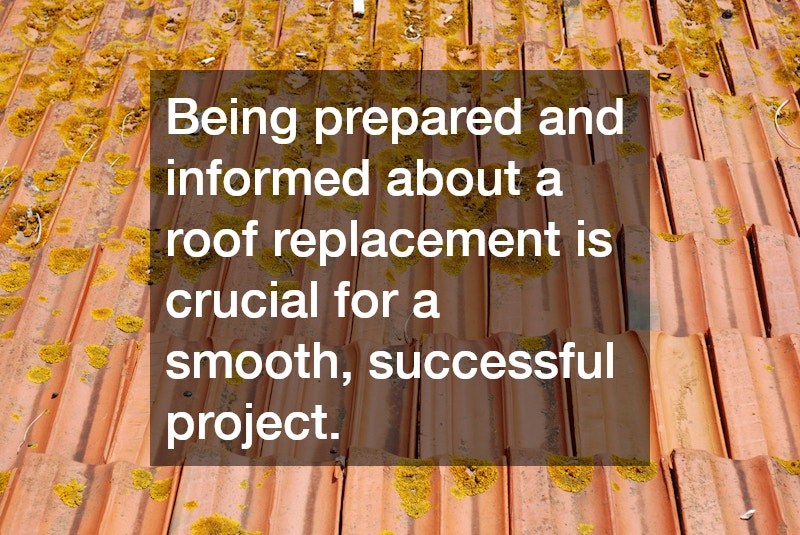Roof replacement is a significant undertaking that every homeowner is likely to face at some point. Understanding what to expect during this home improvement project can ease anxiety and prepare you for the process. This article outlines the key aspects of a roof replacement to help you navigate this substantial investment with confidence and clarity.
1. How Long Does a Roof Replacement Take?
Factors Influencing Duration
The timeline for a roof replacement can be influenced by various factors, including weather conditions and the size of your roof. Adverse weather, such as rain or wind, can delay work, making it important to plan for potential interruptions. Moreover, larger or more complex roofs typically require more time to complete, impacting the overall duration of the project.
Typical Timelines for Various Roofing Materials
Each roofing material has a different installation timeline, affecting how long a replacement takes. Asphalt shingles, for instance, can often be installed within a few days, while metal or tile roofs may require a week or more due to their complexity. Understanding these differences can help you set realistic expectations for your roof replacement project.
Managing Expectations and Timelines
Communicating effectively with your contractor is essential for managing expectations and ensuring the project stays on schedule. Establishing a clear timeline from the outset and discussing potential delays can help mitigate misunderstandings. It’s also wise to have a contingency plan for unexpected issues that might extend the project duration.
2. What are the Costs Involved in Replacing a Roof?
Material Costs
The cost of materials is a significant component of a roof replacement and varies widely depending on the type of roofing you choose. Asphalt shingles are generally the most affordable, while metal, tile, or slate can be considerably more costly. Carefully considering these options in relation to your budget and long-term goals is crucial when planning a roof replacement.
Labor Expenses
Labor costs are another major factor, often influenced by the complexity of the roof and the expertise required. Experienced contractors may charge more, but their proficiency can ensure a smoother, more reliable installation. Understanding how labor costs are calculated can help you budget effectively for your roof replacement.
Unexpected Costs
During a roof replacement, unforeseen expenses such as structural repairs or additional materials can arise. It’s prudent to allocate a portion of your budget to cover these potential surprises. Engaging in open discussions with your contractor about possible extra costs can help prevent budget overruns.
3. How to Choose the Right Roofing Contractor?
Qualifications and Experience
Selecting a contractor with the right qualifications and experience is critical for a successful roof replacement. Look for contractors with relevant certifications and a proven track record in the industry. Their expertise not only guarantees quality work but also ensures adherence to safety standards and building codes.
Reviews and References
Checking reviews and references is a valuable step in vetting potential roofing contractors. Feedback from previous clients can provide insights into a contractor’s reliability and workmanship. Positive reviews and solid references can offer reassurance and guide you in making an informed hiring decision.
Comparing Bids
When reviewing bids from different contractors, it’s important to compare not just costs but also the scope of work and materials used. Lower bids might sacrifice quality, so it’s vital to ensure that you’re getting value for your money. Analyzing bids comprehensively can safeguard your investment and result in a superior roof replacement.

4. What are the Different Roofing Materials Available?
Asphalt Shingles
Asphalt shingles are the most common roofing material due to their cost-effectiveness and ease of installation. They are available in a variety of styles and colors, offering flexibility in design. Furthermore, their lifespan, typically ranging from 15 to 30 years, provides a reasonable balance between affordability and durability.
Metal Roofing
Metal roofing is known for its durability, longevity, and energy efficiency advantages. It’s a sustainable option that reflects heat, reducing cooling costs, and can last up to 50 years or more with proper maintenance. While the initial investment is higher, the long-term savings and durability often justify the cost for many homeowners.
Eco-Friendly Alternatives
Sustainable roofing options, like solar tiles and green roofs, are becoming increasingly popular for their environmental benefits. These materials help reduce energy consumption and can enhance a home’s overall sustainability. Although they require a larger upfront investment, the ecological advantages and potential energy savings make them an appealing choice for environmentally conscious homeowners.
5. How to Prepare Your Home for a Roof Replacement?
Securing Interior and Exterior Spaces
Protecting your home during a roof replacement is essential to prevent damage and ensure safety. Secure the interior by covering furniture and valuables, and consider moving vehicles and outdoor items to a safe distance. Proper preparation can minimize the risk of damage and keep your possessions safe throughout the project.
Communicating with Neighbors
Informing your neighbors about the upcoming roof replacement can help mitigate potential disruptions and maintain good relations. Providing advance notice allows them to prepare for noise and any parking inconveniences. Open communication fosters cooperation and understanding during the home improvement process.
Dealing with Debris and Clean-Up
Managing debris is an integral part of the roof replacement process, requiring efficient cleanup to restore your property’s condition. Discuss cleanup procedures with your contractor to ensure all debris is properly removed. Implementing an effective debris management plan is crucial for a tidy and safe environment post-project.
In conclusion, being prepared and informed about a roof replacement is crucial for a smooth, successful project. Understanding the timeline, costs, materials, and preparation steps can alleviate stress and facilitate better decision-making. By approaching your roof replacement with knowledge and foresight, you can ensure a positive experience and a satisfactory outcome.
